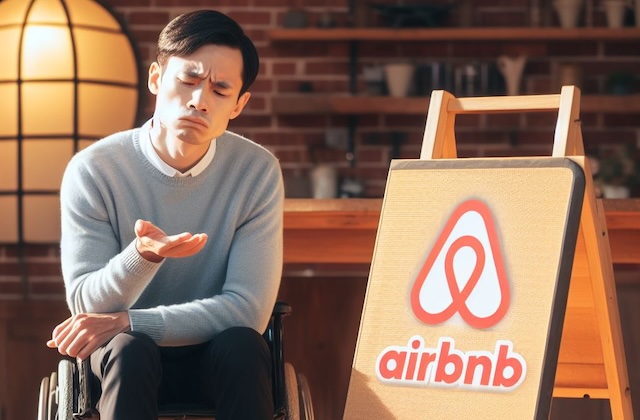
AirBnB
Disclaimer:
This post is a fictitious case study example created for educational and illustrative purposes only. Any references to any company, its products, or services are purely fictional and do not imply endorsement, affiliation, or association with the actual company.
Introduction | AirBnB
Case study on Airbnb, a pioneer in the sharing economy, has changed the way people travel, offering unique accommodations worldwide. However, one significant problem remains – the accessibility of accommodations for differently-abled travellers. In this product case study, we will explore the challenges and solutions in making Airbnb more inclusive. From a comprehensive problem statement to a detailed go-to-market strategy, we will delve into every aspect of addressing this critical issue.
😵💫 The Foundation: Problem Statement
Problem Statement:
A significant problem faced by differently-abled travellers is the lack of accessibility information about Airbnb listings, resulting in inconvenience, missed opportunities, and limited travel choices.
- Impact: This problem impacts the travel experience, limiting options and causing frustration for differently-abled travelers.
- Pain Points: Differently-abled travellers often struggle to find accommodations that meet their specific needs, leading to stressful and less enjoyable trips.
🍎 Company Information
➡️ Company Overview: Airbnb is a global online marketplace and hospitality service that has redefined the travel industry. With a presence in over 220 countries and regions, Airbnb has over 150 million users and a revenue of $3.4 billion. The company’s mission is to create a world where anyone can belong anywhere. Airbnb’s current product portfolio includes various accommodation types, from private rooms to entire homes.
⚔️ Competitors: Airbnb faces competition from several key players in the short-term vacation rental industry. Some of its prominent competitors include Vrbo, a platform known for its family-friendly vacation homes; Booking.com, a global travel giant offering a wide range of accommodations; HomeAway, which specializes in luxury vacation rentals; Expedia’s HomeAway and its sub-brands; and Flipkey, a subsidiary of TripAdvisor focusing on vacation rental listings. Additionally, TUI Villas, a European vacation rental platform, and Vacasa, a company that manages vacation rental properties, also contend in the competitive landscape of alternative accommodations.
*️⃣ Market Size and Opportunity
🏪 Market Research: The global accessible tourism market is valued at $1.2 trillion. In the U.S. alone, there are over 40 million differently-abled individuals, with a combined disposable income of $490 billion.
[convertful id=”218861″]
🤑 Opportunity: By making its listings more accessible, Airbnb can tap into this growing market and position itself as a leader in accessible travel.
User Persona
- Name: Sarah
- Characteristics: 32-year-old traveller with mobility challenges
- Needs: specific needs such as wheelchair-accessible entrances, roll-in showers, and ramps
- Goals: Explore new places.
- Pain Points: Limited accommodation choices and the stress of finding suitable options that support accessibility.
😁 User Journey – Happy Scenario
- Sarah, a differently-abled traveller, visits Airbnb’s website and selects her destination for an upcoming trip to New York.
- She uses the newly implemented “Accessibility Filter” and checks options like “Wheelchair Accessible” and “Accessible Bathroom.”
- Airbnb’s platform presents a list of properties meeting her accessibility criteria, complete with detailed descriptions and photos.
- Sarah books a spacious apartment with a ramp, an accessible bathroom, and clear pathways throughout.
- She communicates directly with the host via Airbnb’s in-app messaging to discuss any specific needs.
- Sarah enjoys a seamless and comfortable stay at her chosen accommodation, and she leaves a glowing review about the accessibility features.
- Airbnb sends her a post-stay survey to collect feedback on her accessibility experience.
🙁 User Journey – Unhappy Scenario
- Sarah, a differently-abled traveller, goes to Airbnb’s website to plan her trip to New York.
- She notices the absence of an “Accessibility Filter” and has no way to filter for accessible listings.
- Sarah is left to sift through various property descriptions, contacting hosts individually to inquire about accessibility features.
- She books a property that claims to be accessible, trusting the host’s word, as there is no formal certification process.
- Upon arrival, Sarah realised that the property had accessibility issues, such as narrow doorways and no roll-in shower, causing her frustration and inconvenience.
- She reaches out to the host for solutions, but the experience remains less than ideal.
- After the trip, Sarah leaves a negative review, warning other travellers about the property’s inaccurately described accessibility.
👨🔬 Possible Solutions
- Accessibility Filter: Implement an accessibility filter allowing hosts to detail accessibility features and travellers to search for accessible listings.
- Host Training: Provide training for hosts to accurately describe their listing’s accessibility.
- Accessibility Certification: Create a certification process for hosts who meet specific accessibility criteria.
- User Reviews: Allow travellers to leave reviews regarding accessibility, providing insights for future guests.In-App Communication: Enable direct communication between travellers and hosts to address specific needs.
🤷♂️ User Prioritization Frameworks

🏆 Success Metrics
- Increase in differently-abled travellers’ bookings by 30% within the first year.
- 90% of hosts complete accessibility training within six months.
- 80% of listings obtain accessibility certification within the first year.
- 95% of travelers report satisfaction with accessibility features, based on post-stay surveys.
🛍️ Go-To-Market Strategy
1️⃣ Collaboration with Differently-Abled Associations: Partner with organizations advocating for differently-abled individuals to promote Airbnb’s commitment to accessibility.
2️⃣ Awareness Campaign: Launch a marketing campaign highlighting Airbnb’s accessible listings, targeting differently-abled travellers.
3️⃣ Host Incentives: Offer incentives for hosts to complete accessibility training and obtain certification.
4️⃣ Enhanced Customer Support: Provide dedicated support for differently-abled travellers to address their specific needs.
5️⃣ Iterative Development: Continuously improve the accessibility filter and user interface based on user feedback.
🔔 Conclusion: Enhancing User Experience
Airbnb’s journey to redefine accessibility for differently-abled travellers demonstrates the power of identifying and addressing real-world problems. By understanding the needs of differently-abled users, creating a user-centric experience, and implementing a comprehensive solution, Airbnb can lead the way in making travel more inclusive and enjoyable for everyone.
As we examine this case study, we can find inspiration in making our products more accessible and inclusive. By doing so, we not only meet the needs of underserved markets but also align with the values of a more diverse and inclusive world.
If you arrived at this post via some link and want to learn more about product management, you can also find other posts. The Full series is available here
💌 Do drop me a comment below if you found the content useful and/or want me to write on a specific topic. This will make my day! 🙂
Also, share the post if you think this might help someone. The sharing link is at the top of the page.
Join FreeMentor as a student if you are a newbie in product management and want to

